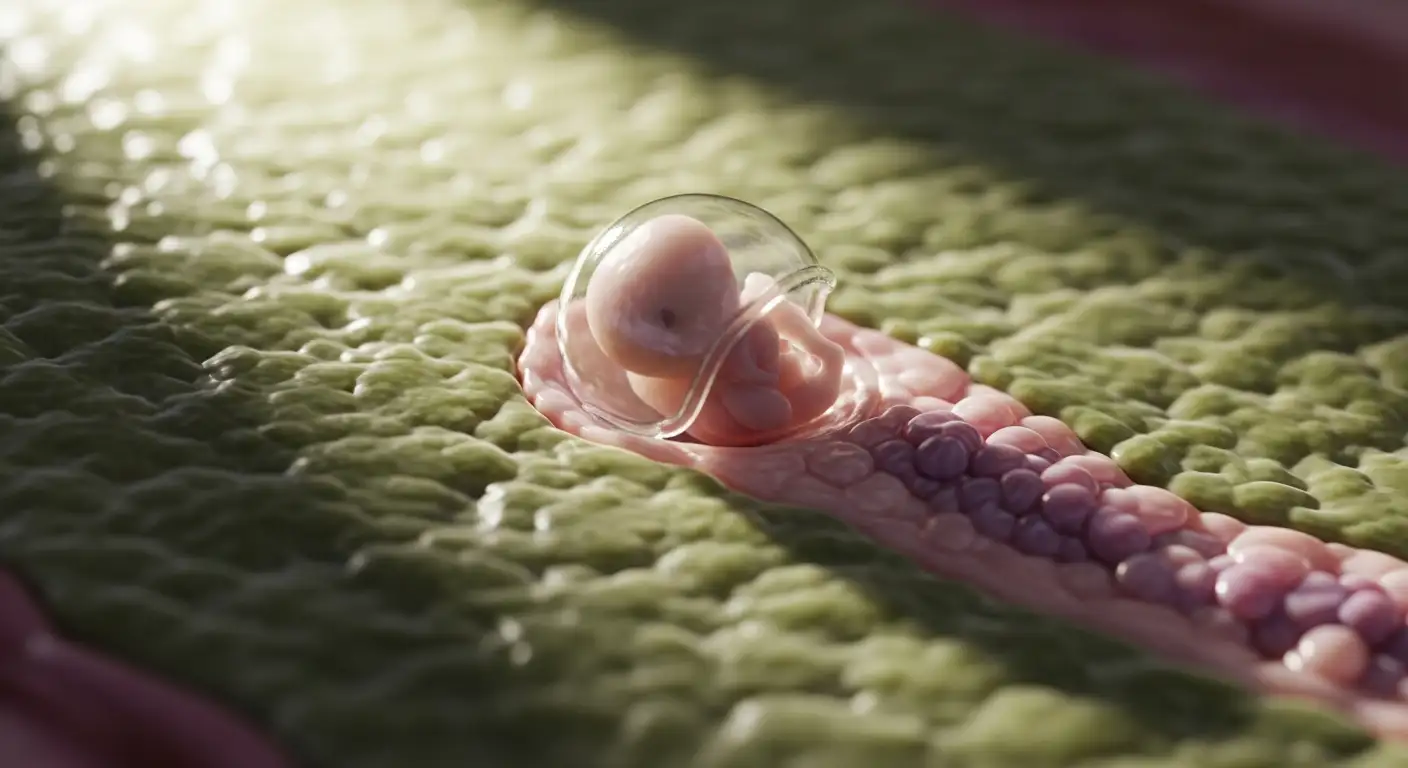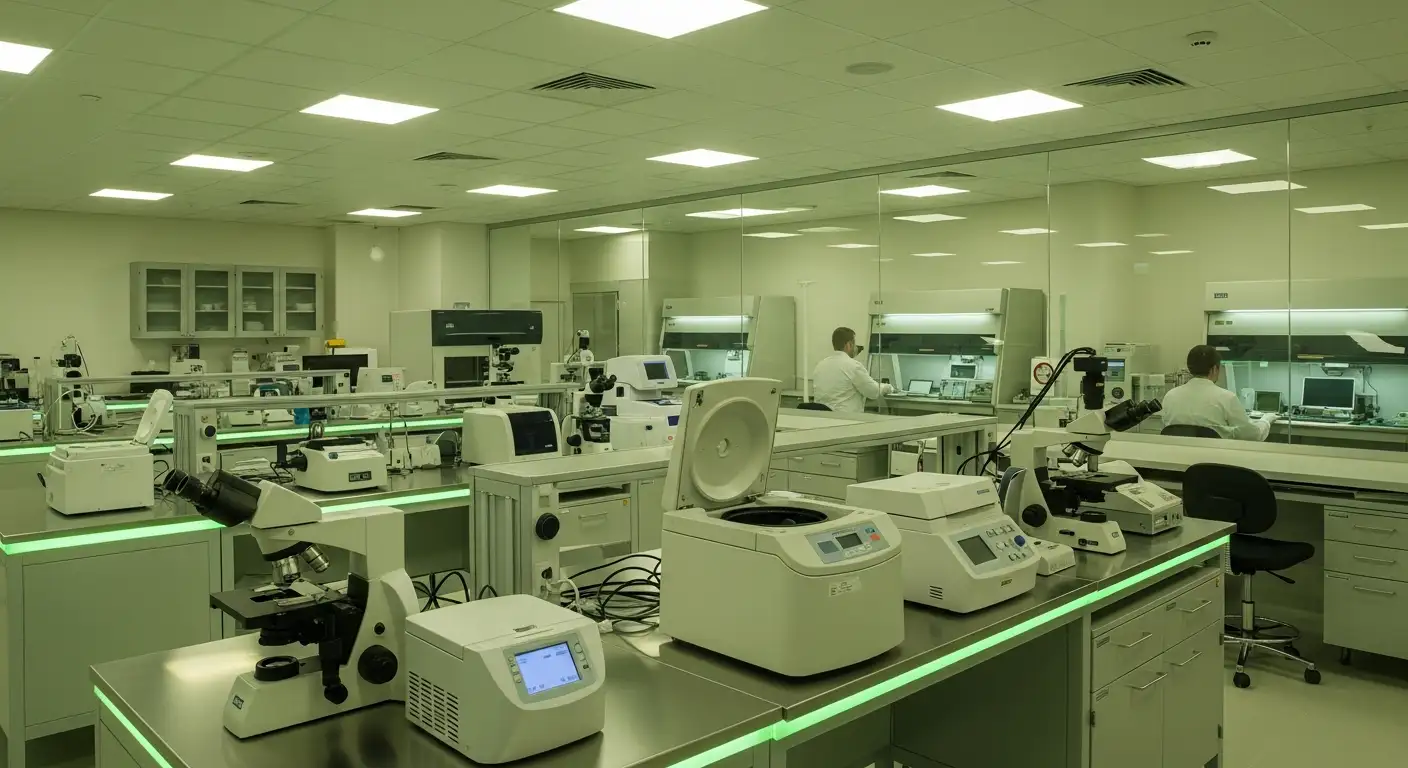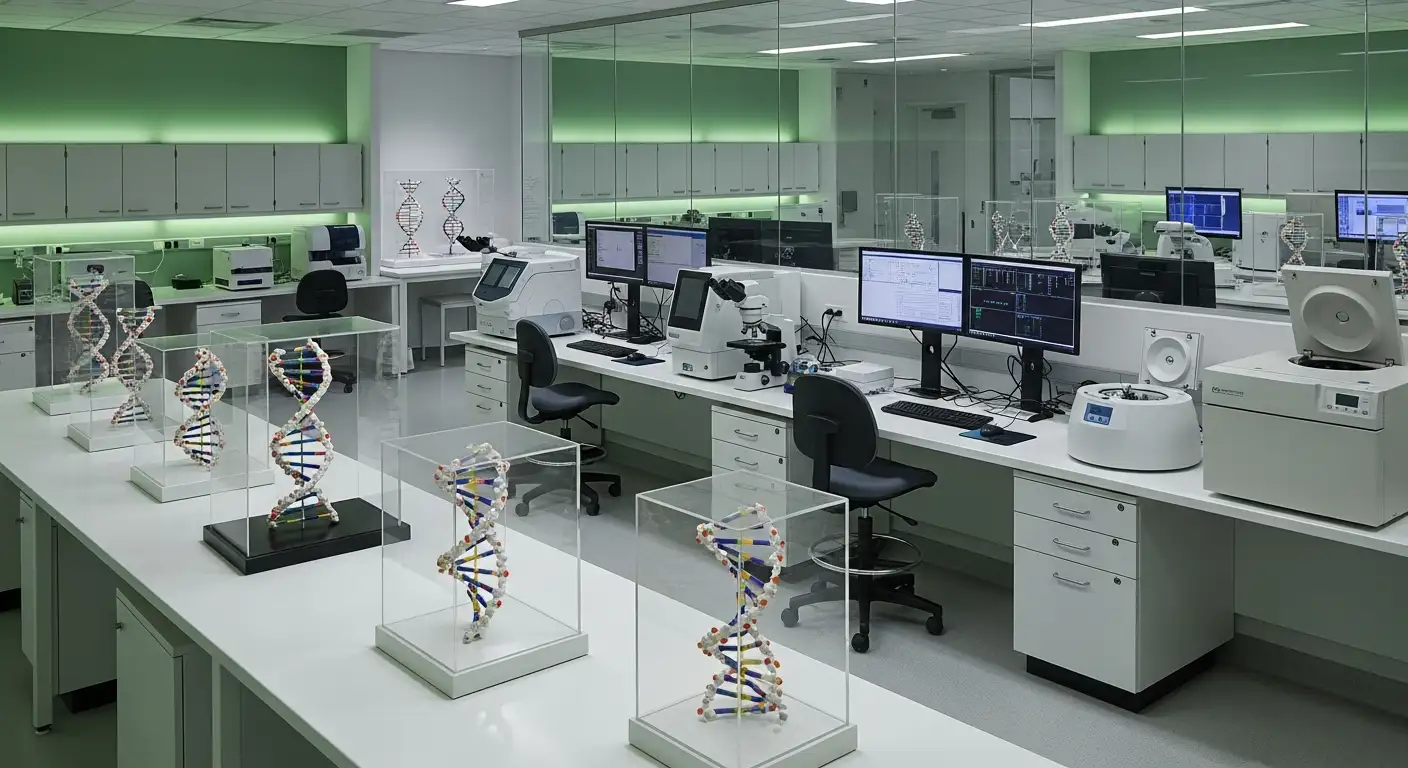What does embryo grading mean and why it matters
Deciphering Embryo Quality: The Key to IVF Success

Understanding Embryo Grading in Fertility Treatments
Embryo grading is a vital part of In Vitro Fertilization (IVF), providing insights into the developmental potential of embryos. This assessment helps clinicians select the most promising embryos for transfer, aiming to increase pregnancy success rates. By examining various morphological features at specific stages, embryo grading offers a non-invasive method to evaluate embryo quality. As technology advances, the precision of embryo grading continues to improve, empowering patients and physicians in making informed decisions.
What is embryo grading in fertility treatment?
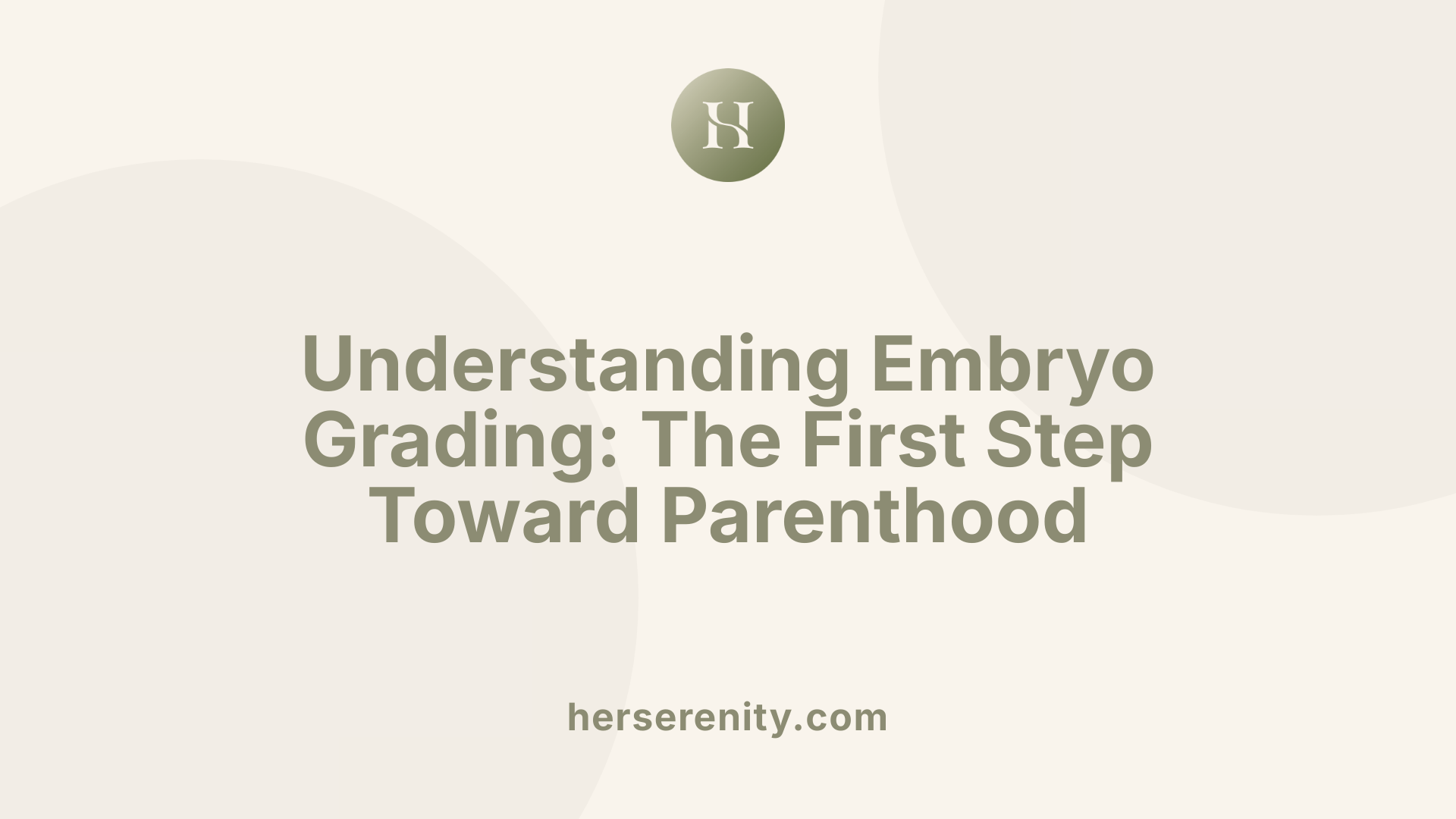
What is embryo grading in fertility treatment?
Embryo grading is a process used in fertility clinics to evaluate the quality and potential of embryos created during in vitro fertilization (IVF). It involves examining the embryo’s appearance under a microscope at specific stages, mainly on Day 3 and Day 5 after fertilization.
During this assessment, embryologists look at various factors such as cell number, cell symmetry, the presence of fragmentation, and developmental stage. For blastocyst-stage embryos on Day 5, grading focuses on the expansion of the cavity, as well as the inner cell mass (ICM) and trophectoderm (TE) quality, using detailed grading scales like Gardner's system.
Embryo grading helps determine which embryos are the most suitable for transfer, freezing, or further testing. Higher-grade embryos are associated with a higher likelihood of successful implantation and pregnancy. However, it's important to remember that grading is subjective and does not guarantee pregnancy success. It is a valuable guide alongside other factors such as the patient’s age, fertility history, and genetic testing results.
How embryo grading is performed during IVF
In IVF, embryologists perform a visual assessment of fertilized eggs to assign a grade based on their appearance and developmental progress. For Day 3 embryos, the grading considers the cell count, symmetry, and level of fragmentation, with ideal embryos having about 8 cells, minimal fragmentation, and uniform size.
On Day 5, when the embryo reaches the blastocyst stage, grading becomes more detailed. It involves scoring the degree of expansion (on a scale from 1 to 6), the quality of the inner cell mass (A-C), and the quality of the trophectoderm (A-C). These components collectively inform the embryo’s potential.
Automated systems, including artificial intelligence (AI), are increasingly being explored to enhance consistency and reduce subjectivity in embryo grading, though expert embryologist judgment remains essential.
The importance of morphological evaluation
Morphological evaluation provides crucial insights into embryo viability, helping clinics select better-quality embryos for transfer. Although it does not assess genetic health, it offers an accessible and quick assessment tool.
Grading systems like Gardner’s are widely used, which assign combined scores such as 4AA or 5AB, with higher scores indicating an embryo with better developmental features. Embryos with high grades, such as 5AA, have shown higher success rates in terms of implantation and live birth outcomes.
Nevertheless, even lower-graded embryos can sometimes result in healthy pregnancies, emphasizing that embryo quality is just one part of a complex success picture. This evaluation guides clinicians but is complemented by other assessments, ensuring the best possible chances for conception.
| Embryo Feature | Grading System Example | Description | Impact on Success |
|---|---|---|---|
| Cell number (Day 3) | Grade 1-4 | 6-10 cells, uniform, low fragmentation | Better stage indicates higher viability |
| Fragmentation | <20% ideal | Less fragmentation is preferred | Reduces likelihood of developmental issues |
| Day 5 expansion stage | 1-6 scale | Degree of blastocyst expansion, with 6 being fully hatched | Higher scores correlate with greater developmental potential |
| Inner Cell Mass (ICM) | A-C grading | Quality of the cell mass that develops into the fetus | Grade A indicates a healthy potential, but lower grades are still viable |
| Trophectoderm (TE) | A-C grading | Cell layer forming the placenta | Higher grades favor better embryo viability |
Embryo grading, while highly informative, is just one aspect of embryo selection. Combining morphological assessment with genetic testing and other clinical factors provides the best outlook for success.
Why is embryo grading important in fertility treatments?

Role of embryo grading in embryo selection
Embryo grading plays a vital role in the process of choosing the most promising embryos during IVF. Trained embryologists evaluate embryos based on their appearance under a microscope, focusing on factors such as cell number, symmetry, and fragmentation for day 3 embryos, and cavity expansion, inner cell mass (ICM), and trophectoderm (TE) quality for day 5 blastocysts. Using standardized systems like Gardner’s grading scale, they assign scores that indicate potential viability. High-quality embryos often display uniform cells, minimal fragmentation, and strong ICM and TE, suggesting a better chance of successful implantation.
Impact on embryo transfer decisions
Embryo grading directly influences decisions about which embryos to transfer, freeze, or discard. Fertility clinics typically prioritize higher-graded embryos for transfer to optimize pregnancy chances. For example, a blastocyst graded 4AA or 5AA, indicating robust expansion and excellent ICM and TE, is generally preferred. Conversely, lower-grade embryos may be saved for further observation, frozen for future cycles, or even not used if deemed less viable. This systematic assessment helps reduce the risk of multiple pregnancies by allowing selective transfer of the best embryos.
How embryo grades correlate with pregnancy outcomes
While better embryo grades are statistically linked to higher pregnancy and live birth rates, they do not guarantee success. Studies show that high-grade embryos like AA or AB have higher implantation potential, with live birth rates around 58% and 46%, respectively. However, even embryos with lower grades can sometimes lead to healthy pregnancies. Embryo grading is one part of a comprehensive evaluation, which also considers genetic status, uterine environment, and patient factors.
| Embryo Grade | Typical Corresponding Chance of Successful Implantation | Notes |
|---|---|---|
| 4AA / 5AA | Around 58%-60% | Indicates high developmental potential |
| 3AB / 4AB | Approximately 40%-50% | Slightly lower but still promising |
| Lower grades | Varies significantly | Reduced likelihood but not certainty of success |
How does embryo grading affect IVF outcomes?

Correlation between embryo quality and success rates
Embryo grading is a crucial step in the IVF process, helping clinicians identify which embryos have the highest potential for a successful pregnancy. High-grade embryos, often rated as AA or 4AA, tend to have better developmental prospects. These embryos show optimal cell number, symmetry, and minimal fragmentation at the cleavage stage or excellent blastocyst qualities such as good expansion and strong inner cell mass and trophectoderm features.
Research consistently demonstrates that transferring top-rated embryos increases the likelihood of implantation. For instance, embryos graded as AA or AB have higher implantation rates and lead to higher clinical pregnancy rates than lower-grade options. This assessment guidesembryologists and doctors in selecting the most viable embryos for transfer, enhancing IVF success probabilities.
Statistical data on pregnancy and live birth rates based on embryo grades
Data from various fertility clinics and studies highlight the link between embryo quality and outcomes. For example, embryos graded as AA in the blastocyst stage can have pregnancy success rates around 58%, while BB grades show about 46%. Lower grades like CC tend to correspond with reduced chances, around 23%. These statistics help set realistic expectations and refine embryo selection.
Moreover, choosing higher-grade embryos consistently correlates with increased live birth rates. Transfers involving top-quality embryos have significantly better odds of resulting in a healthy pregnancy. However, it’s important to acknowledge that these figures are statistical, not guarantees, and individual results may vary.
Influence of embryo quality on miscarriage rates
Embryo quality also influences pregnancy sustainability. Poor-quality embryos are linked with higher miscarriage risks, partly due to underlying genetic abnormalities that aren’t detectable through morphological grading alone. Even a good-looking embryo can carry genetic issues that might lead to pregnancy loss.
Though embryo grading cannot assess genetic health outright, selecting higher-grade embryos minimizes this risk, improving overall outcomes. Combining morphological assessment with preimplantation genetic testing (PGT) offers a more comprehensive approach, further reducing miscarriage chances.
| Embryo Grade | Approximate Success Rate (%) | Notes on Interpretation |
|---|---|---|
| 4AA / 5AA | 58 | Highest quality, best prognosis |
| 4BB / 5AB | 46 | Good quality, strong chances |
| 4CC / 5BC | 23 | Lower quality, more caution needed |
Using embryo grading alongside other assessments helps optimize IVF outcomes, though success remains influenced by multiple factors, including maternal age and genetic health.
What role does embryo grading play in assessing embryo quality?
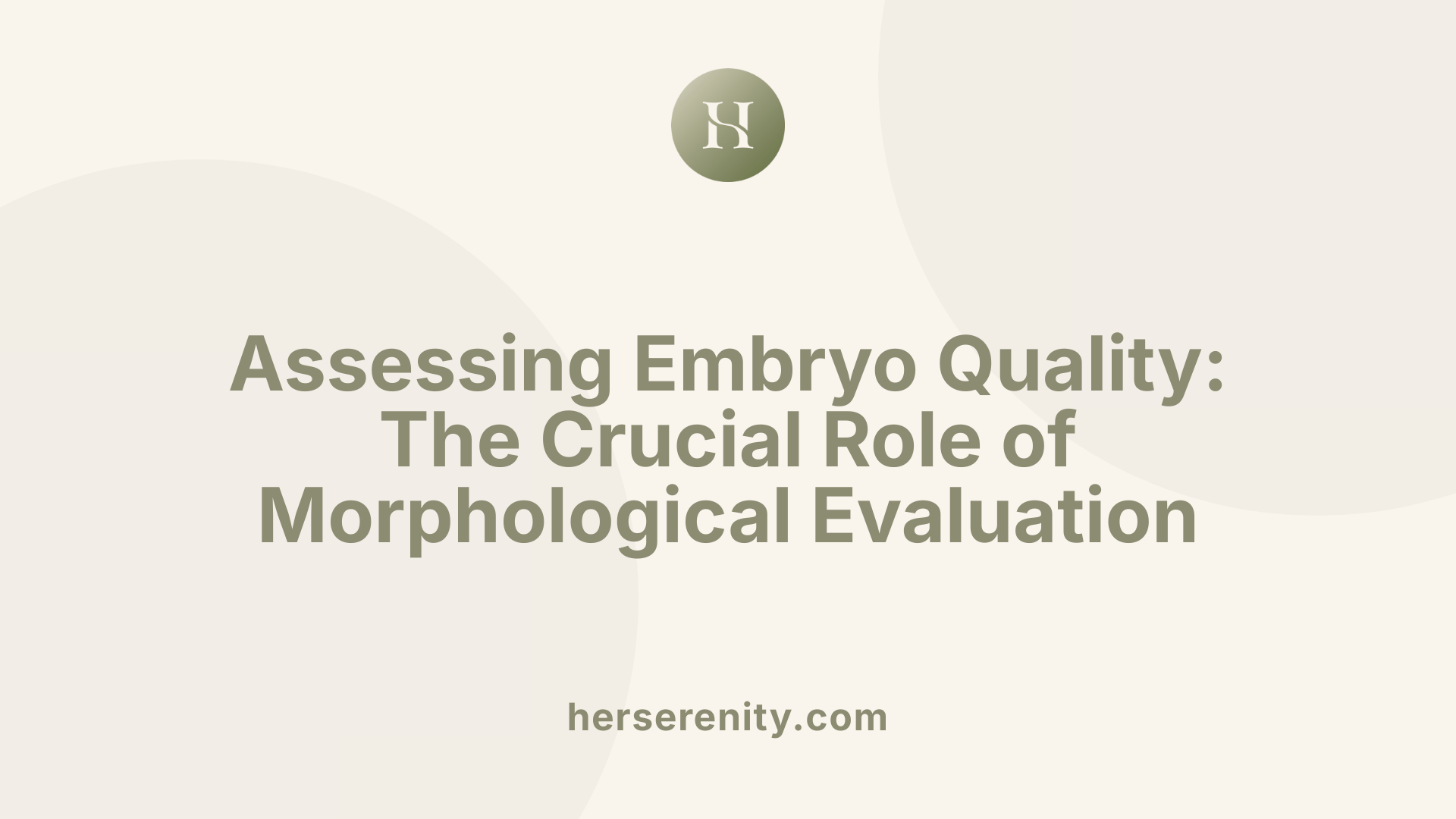
Key morphological features assessed
Embryo grading involves a detailed visual examination of the embryo's structure and appearance under a microscope. For day-3 embryos, focus is on cell number, size uniformity, symmetry, and the level of fragmentation, which is the appearance of cell debris. An ideal day-3 embryo has around 8 cells, with uniform size, and less than 20% fragmentation. For day-5 embryos, known as blastocysts, grading considers the level of cavity expansion, the quality of the inner cell mass (ICM), and the trophectoderm (TE). These features help embryologists determine the embryo's developmental stage and health potential.
Stages at which grading is performed
Embryo assessments are typically conducted at two critical points: day 3 and day 5 after fertilization. Day-3 grading evaluates the cleavage-stage embryo, focusing on cell number and appearance, which signifies the embryo's early development. Day-5 grading happens when the embryo reaches the blastocyst stage, characterized by cavity expansion and the formation of distinct cell layers. The cumulative information from these stages assists in selecting the best candidate(s) for implantation.
Use of grading systems like Gardner’s
The Gardner grading system is widely used for day-5 blastocysts. It assigns a number from 1 to 6 based on the degree of expansion, with higher numbers indicating more advanced development. Additionally, it uses letter grades A through C for the inner cell mass and trophectoderm, where 'A' signifies the best quality. For example, a grade of 4AA indicates a well-expanded blastocyst with excellent inner cell mass and trophectoderm quality. These detailed scores help clinicians estimate the likelihood of successful implantation, with higher grades generally correlating with better outcomes.
| Aspect | Day 3 Embryo Characteristics | Day 5 Blastocyst Grading | Significance |
|---|---|---|---|
| Main features | Cell number, cell size, fragmentation | Expansion stage, ICM quality, TE quality | Predicts embryo viability and implantation potential |
| Grading scale | 1-4 based on cell number and fragmentation | 1-6 for expansion, A-C for ICM and TE | Guides selection for transfer or freezing |
| Outcomes linked to | Cell symmetry and fragmentation | Blastocyst development level, cellular organization | Higher grades suggest better development, higher pregnancy rates |
Overall, embryo grading offers vital non-invasive insights into embryo quality. While it cannot guarantee success due to other factors like genetics, it remains a cornerstone in embryo selection during IVF, helping improve chances for a successful pregnancy.
How does embryo grading influence the success of fertility treatments?

How does embryo grading influence the success of fertility treatments?
Embryo grading is a vital step in IVF (in vitro fertilization) that helps embryologists evaluate the quality of embryos based on their appearance under a microscope. This assessment involves examining several morphological aspects, including cell number, symmetry, fragmentation level, and blastocyst development when applicable.
On Day 3, embryos are typically graded by the number of cells they contain, with 8-cell embryos considered ideal, and assessed for fragmentation and symmetry. Better quality embryos exhibit uniform cell size, minimal fragmentation, and appropriate cell count, which suggests higher developmental potential.
By Day 5, embryos develop into blastocysts with visible cavities. These are graded based on their expansion stage, and the quality of the inner cell mass (which forms the fetus) and the trophectoderm (which forms the placenta). Higher grades like 5AA or 6AA indicate a well-developed blastocyst with excellent cell quality, associated with higher chances of successful implantation.
Selection of embryos for transfer
The primary purpose of embryo grading is to select the most promising embryos for transfer. High-grade embryos are prioritized because they are more likely to implant successfully and lead to a healthy pregnancy. For example, embryos graded AA tend to have higher implantation and live birth rates compared to lower grades like CC. This grading helps embryologists and fertility specialists make informed decisions, especially when multiple embryos are available.
Correlation between higher grades and success rates
Studies consistently demonstrate that better-graded embryos correlate with higher pregnancy success rates. Embryos with grades such as AA or AB show live birth rates significantly higher than those with lower grades. For instance, embryos scored as AA can have live birth rates around 58%, while CC scores might only have a 23% success rate. However, it's important to remember that grading is not infallible; even lower-graded embryos can result in successful pregnancies.
Combination with other assessments for optimal results
While morphological grading offers valuable insights, it is only one aspect of embryo evaluation. Combining grading with other assessments, such as preimplantation genetic testing (PGT), provides a more comprehensive picture of embryo viability. Genetic testing detects chromosomal abnormalities that morphology alone cannot reveal.
AI-based automated grading systems are emerging, aiming to reduce subjectivity and increase consistency in assessments. Despite technological advances, human expertise remains essential, as embryo viability depends on multiple factors beyond morphology.
| Aspect | Typical Grading Criteria | Associated Success Rates | Additional Factors |
|---|---|---|---|
| Day 3 embryo | Cell number, fragmentation, symmetry | Higher for grades 1-2 | Genetic health, embryo environment |
| Day 5 blastocyst | Expansion, inner cell mass, trophectoderm | Higher for 5AA, 6AA | Uterine receptivity, patient age |
| Embryo grading systems | Gardner, SART, Cummins | Varies but generally positive | Genetic testing (PGT), clinical factors |
In conclusion, embryo grading significantly influences fertility treatment outcomes by helping select the most viable embryos for transfer. While it enhances success rates, it is most effective when used alongside other assessments to account for the complex factors that contribute to pregnancy.
What is the process of embryo quality evaluation in IVF?
Timing of evaluation (Day 3 and Day 5)
Embryo grading in IVF is typically performed on days three and five after fertilization. On day three, embryos are at the cleavage stage, having undergone several cell divisions. By day five, they reach the blastocyst stage, characterized by a fluid-filled cavity and differentiated cell layers. These specific points in development allow embryologists to assess growth and morphological features critical to predicting embryo viability.
Morphological features assessed
On day three, evaluation focuses on cell number, symmetry, and fragmentation. Ideally, an embryo will have about 8 cells with uniform size, minimal fragmentation (less than 20%), and symmetrical appearance. Embryos with more than 20% fragmentation or uneven cells are graded lower. For day five blastocysts, assessment expands to the expansion stage, inner cell mass (ICM), and trophectoderm (TE). Higher expansion scores, along with symmetrical ICM and TE with excellent cell density, indicate better reproductive potential.
Application of grading systems and additional testing
Embryologists commonly employ grading systems such as Gardner's blastocyst scale or others like SART or Cummins' system. These frameworks assign scores, often combining numbers and letters (e.g., 4AA), to quantify embryo quality based on their morphological features. Despite its usefulness, this assessment remains subjective.
To enhance the accuracy, many clinics integrate additional tests like preimplantation genetic testing (PGT), which examines chromosomes for abnormalities. This genetic insight complements morphological grading by providing a more comprehensive picture of embryo health.
While embryo grading helps select the most promising candidates for transfer, it is not an infallible predictor. Successful pregnancy depends on numerous factors beyond morphology, including genetic normalcy and the uterine environment. Ultimately, this evaluation process aims to maximize the chances of pregnancy while acknowledging its limitations.
The Significance of Embryo Grading in IVF Success
In conclusion, embryo grading is an essential component of IVF that provides vital information about embryo quality and potential viability. Although it is a subjective assessment based on morphological features, advances such as standardized grading systems and AI help improve accuracy and consistency. Proper embryo selection, guided by grading, increases the chances of implantation, pregnancy, and live birth, helping many couples realize their fertility goals. However, it is equally important to recognize that embryo grading is just one piece of a larger puzzle, which includes genetic screening, maternal health, and uterine receptivity. Overall, understanding embryo grading empowers patients and clinicians alike to make informed and confident decisions in the journey toward parenthood.
References
- IVF Embryo Grading
- Understanding Embryo Grading - Genesis Fertility New York
- Understanding Embryo Grading: What It Means, Why It ...
- Decoding embryo grading, and why it matters
- Understanding IVF Embryo Grading Systems
- Understanding embryo grading in the IVF process
- Embryo grading; the full low-down | IVF London


















